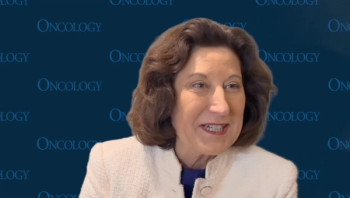
|Articles|December 10, 2013
New Therapies in Development for Multiple Myeloma
Author(s)Joseph R. Mikhael, MD
In this video, Dr. Mikhael discusses the current treatment paradigm for multiple myeloma and highlights some of the new agents in development.
Advertisement
Joseph R. Mikhael, MD, of the Mayo Clinic in Arizona, discusses the current treatment paradigm for multiple myeloma and highlights some of the new agents in development for multiple myeloma, both for treatment-naive and relapsed refractory patients, including the next-generation novel proteasome inhibitors, ixazomib (MLN9708) and oprozomib. Dr. Mikhael also highlights several monoclonal antibodies.
Newsletter
Stay up to date on recent advances in the multidisciplinary approach to cancer.
Advertisement
Advertisement
Advertisement
Trending on CancerNetwork
1
FDA OKs Subcutaneous Amivantamab in EGFR+ NSCLC
2
FDA Grants Regular Approval to Rucaparib in Metastatic CRPC
3
Imlunestrant Combo Will Not Be Pursued for FDA Approval in Breast Cancer
4
Gathering Data to Ascertain Biomarker Specificity in HER2– Breast Cancer
5














































































